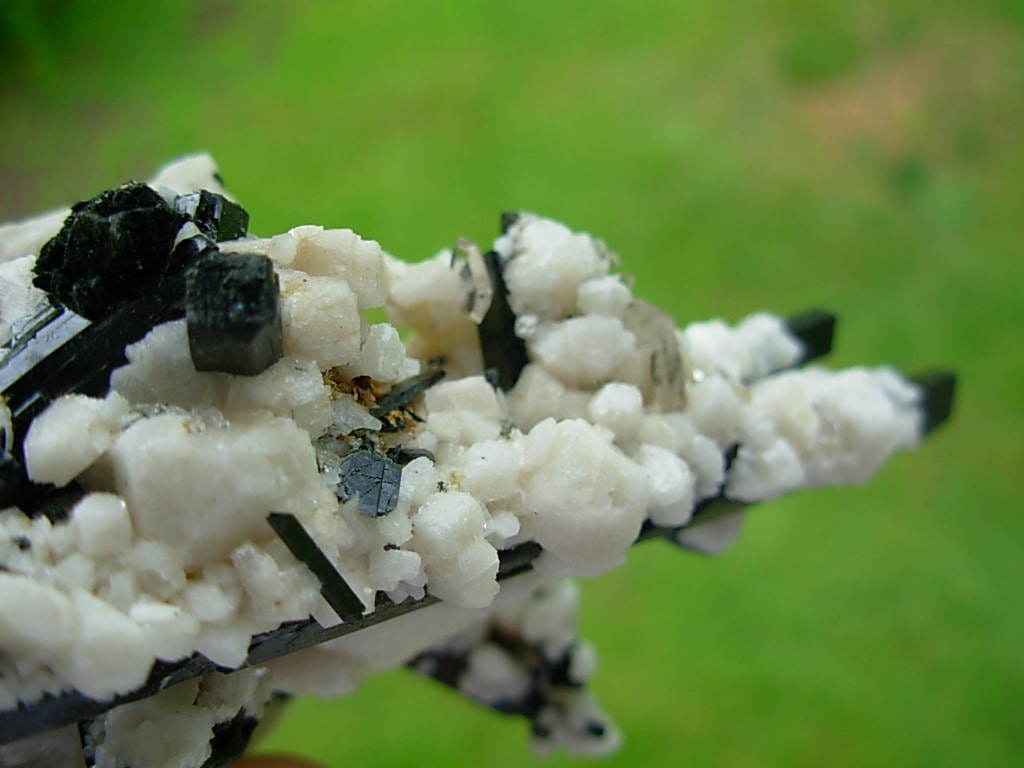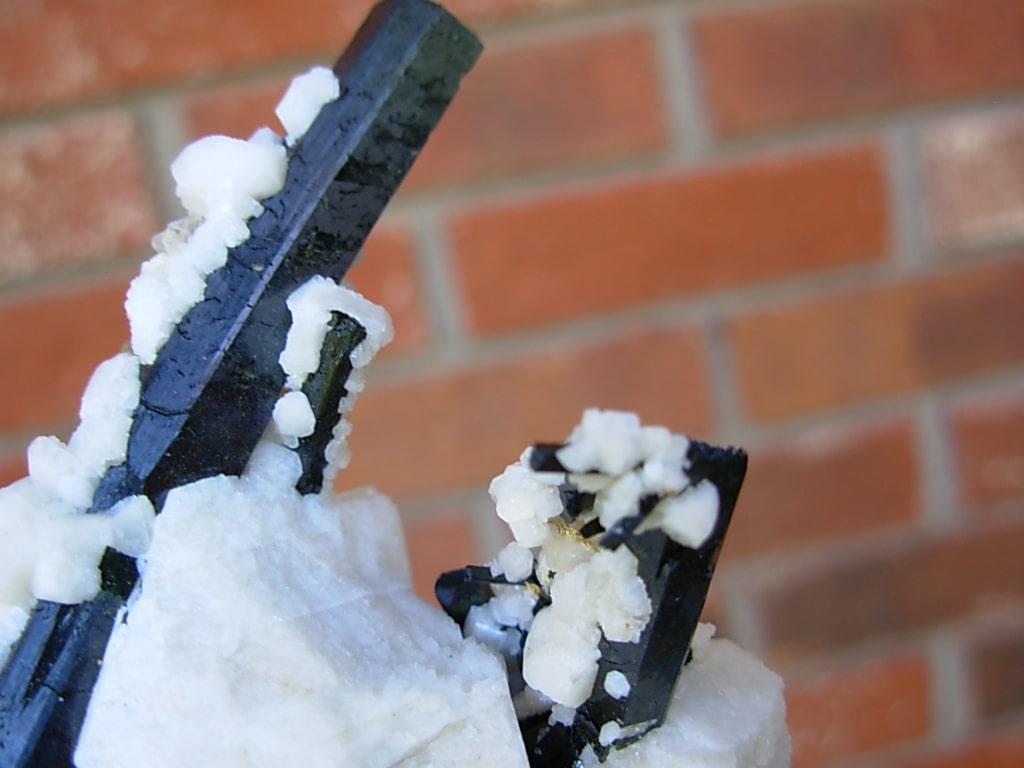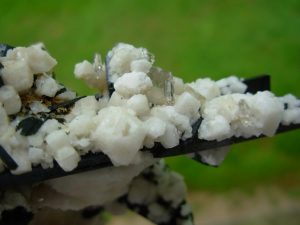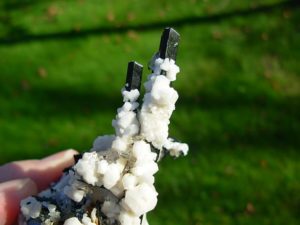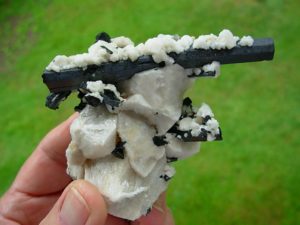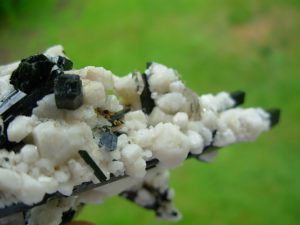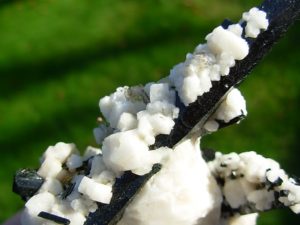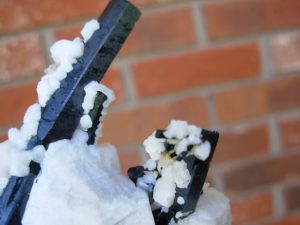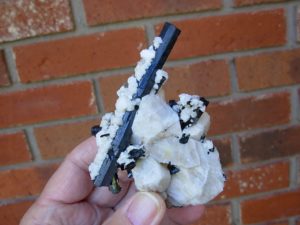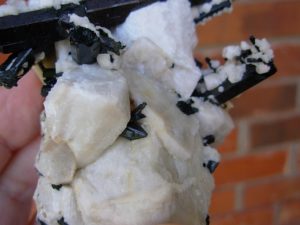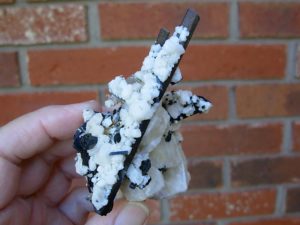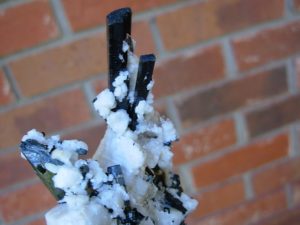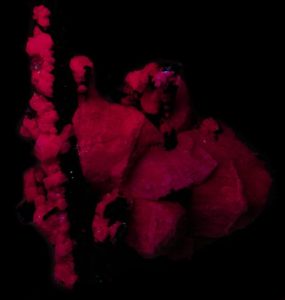Aegirine on Microcline Information Page
Aegirine is a member of the Pyroxene group, a sodium iron silicate that forms as long, prismatic crystals. These impressive crystals have become classics among collectors. The tall opaque monolith-like crystals that rise majestically from their host rocks are absolutely stunning. These may form as long, prismatic crystals that may be terminated in a steep pyramid or flat ends. Aegirine is opaque to translucent, it is dark in color, most often black, though sometimes greenish-black or brownish-black, and is commonly found in alkali-rich volcanic rock. Aegirine is named after the Norse god of the sea, Aegir, and was given when the first specimens of the mineral were discovered in Norway. The aegirine crystals collected vary considerably in their crystal form, size and association with other mineral species. Extremely lustrous onyx-black single crystals can occur. Groups of elongated, prismatic aegirine crystals may form haystack-like groups. Some aegirine crystals are studded with white microcline crystals.
Most of the Feldspar found at Mount Malosa is Microcline. Groups of Microcline are common and often associated with Quartz, Smoky Quartz, and Aegirine. The Microcline is white to very pale-cream in color and twinning is very common.
Malawi, officially the Republic of Malawi, is a landlocked country in southeast Africa that was formerly known as Nyasaland. It is bordered by Zambia to the northwest, Tanzania to the northeast, and Mozambique on the east, south and west. The location is described as very remote, requiring a long hike down the Zomba Mountain into the valley and up the other side to the Malosa Plateau, often involving paths so narrow one foot must be placed in front of the other.
The site where the crystals are excavated is extremely dangerous. The mineral excavation is on the northwestern side of the mountain where a series of major faults have cut through the mountain. These faults have produced scarps with vertical cliff faces up to 2600 feet (800 meters) high. These specimens are found by using primitive equipment and bare hands. There are no mines operating in the region. The specimens are all hand dug from outcrops. Standard climbing equipment like ropes and pitons are not used. The faces are climbed using hands and feet only. It is amazing that under such dangerous and precarious conditions that any of these beautiful and often fragile specimens are collected and survive the excavation trip undamaged. Specimens on other sites are currently selling for twice our price...check and see...https://www.shelterrockminerals.com/cabinet/mt-zomba-district-malosa-malawi-aeg3047
Aegirine with small Quartz Crystals and Microcline crystals from Mt. Malosa Zomba District Malawi in southeast Africa This is a rare ultra high quality specimen of lustrous, jet black Aegirine crystals and contrasting Microcline Feldspar matrix with small clear quartz crystals embellishing this stunning specimen with fluorescent Microcline specimen which is Red under SW Ultra Violet light.
The piece measures 3.8 x 2.6 x 1.59 inches (9.7 x 6.7 x 4 cm) the long Aegirine Crystal measures 3.3 inches (84.3mm) x 0.32inches (8.3mm) x 0.19 inches (5mm). This specimen weighs 5.9 oz or 0.37 lb (168g)

